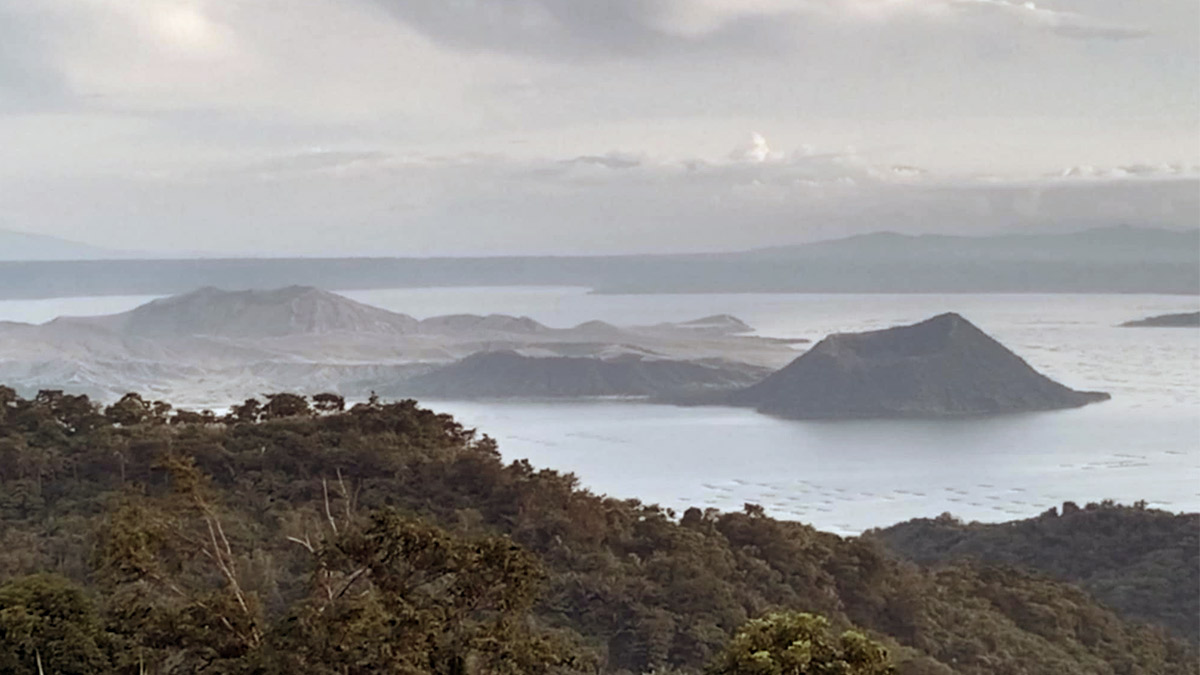
DECEPTIVELY CALM The Taal Volcano Island, locally known as “Pulo,” is deceptively calm in this photo taken on Oct. 2 from a viewpoint in Tagaytay City amid its ongoing unrest, which has prompted state volcanologists to warn officials of towns and cities around Taal Lake to prepare for possible escalation of its alert level from 1 to 2. —SHERWIN TAN
LUCENA CITY — Taal Volcano in Batangas province recorded a minor phreatic or steam-driven eruption that produced a 1,500-meter-high white plume on Thursday, Nov. 28, the Philippine Institute of Volcanology and Seismology (Phivolcs) reported.
In a post on its Facebook around 11:15 a.m., Phivolcs said the phreatic eruption happened “from Taal Volcano Island’s Main Crater at 05:46 a.m.” as captured by IP cameras at their observation stations.
“This event produced a 1,500-meter white plume that drifted southwest,” the Phivolcs said.
A phreatic eruption is a “steam-driven explosion that occurs when water beneath the ground or on the surface is heated by magma, lava, hot rocks, or new volcanic deposits (for example, tephra and pyroclastic-flow deposits),” Phivolcs explained.
In its daily bulletin issued Thursday, Phivolcs recorded the emission of 6,307 metric tons of sulfur dioxide from Taal’s main crater, which rose 600 meters high before drifting southwest.
Phivolcs classified the volcano’s latest spewing activity as “weak emission.”
However, there was no reported upwelling of hot volcanic fluids in the Main Crater Lake on Taal Volcano Island, locally known as “Pulo,” which sits in the middle of Taal Lake.
No volcanic smog, or “vog,” was also observed during the latest monitoring period.
The state volcanologist also detected one volcanic earthquake in Taal Volcano over the last 24 hours.
Taal Volcano is still under alert level 1 (low level of volcanic unrest), Phivolcs said.
The agency reminded the public that Taal Volcano remained in an “abnormal condition.”